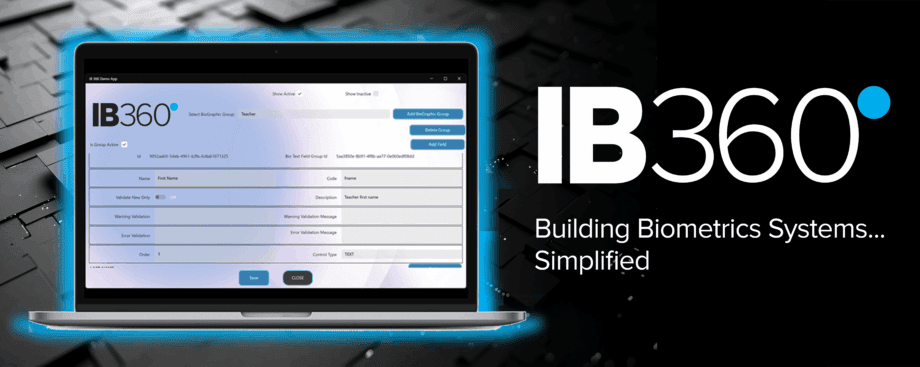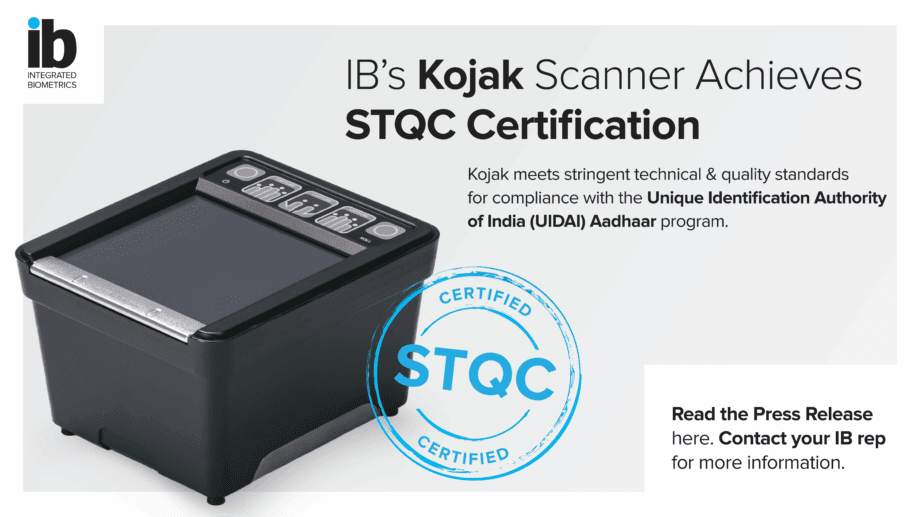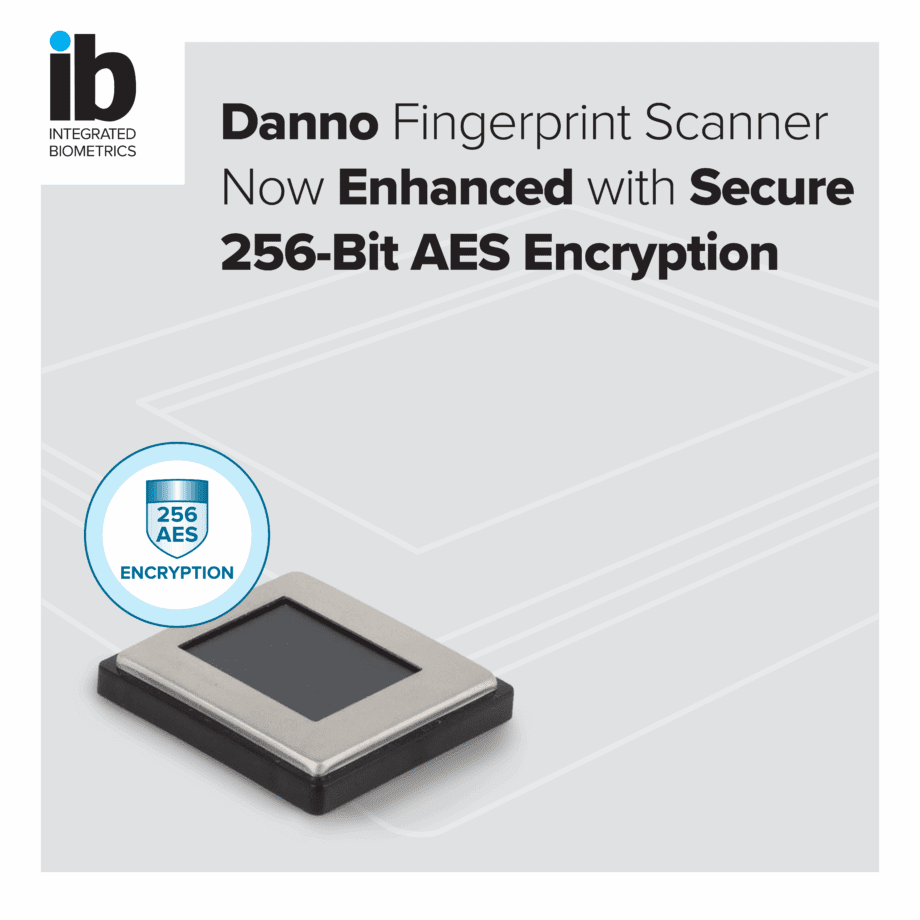Download the Article here.
Each year, millions of infants are born without a recorded identity, missing the crucial first step toward accessing essential healthcare, education, and legal protections. This Mother’s Day, which coincides with Infant Identification Day, highlights how biometric-linked birth registration can be a robust tool in securing lifelong identity and protection for both mothers and their babies.
To explore the impact of infant biometrics and its potential to address pediatric HIV and other health challenges, Integrated Biometrics spoke with Dr. Paul Macharia, a health advocate and researcher specializing in public health and digital solutions.
The Lifesaving Potential of Infant Biometrics
In Kenya, the rate of babies contracting HIV through vertical transmission remains alarmingly high. According to recent reports, approximately 200,000 women missed HIV tests during their pregnancy, increasing the risk of vertical transmission to their infants. “Infant biometrics is very dear to me. It could be the single missing piece in eliminating pediatric HIV in the world,” says Dr. Macharia. “Treatment already exists, but the infant needs to be identified early. Due to the stigma associated with HIV, most mothers hide until it’s too late, six to nine months after birth when the infant is very sick. Most infants hardly make it to one year.”
By linking biometric data to birth registration, healthcare providers can ensure early diagnosis and timely treatment, potentially saving countless lives. Dr. Macharia speaks to the urgency: “Expectant mothers’ HIV screening only hasn’t worked yet…That’s why HIV incidence among infants continues. Unique infant identification puts HIV prevention on the infant’s hands—literally.”
Biometric-Linked Birth Registration as a Tool for Data Transparency and Health Access
Accurate civil registration is essential for collecting data that provides lifesaving insights into maternal and infant health. By linking biometric data to birth registration, health systems can gather reliable information on maternal mortality, infant health outcomes, and disease prevalence, informing targeted interventions and resource allocation. Without accurate birth records, estimating health indicators becomes challenging, particularly in areas with limited data coverage.
For mothers, integrating biometrics at birth not only secures an official identity for their infants, but also connects them to critical health services like immunizations, HIV screenings, and antenatal care. Maintaining comprehensive records from birth enables healthcare providers to track medical histories and deliver timely care, reducing health risks and ensuring that both mothers and children receive the support they need throughout life.
Gauging Acceptability: How Do Mothers Perceive Biometric Registration?
Studies like “Acceptability and perceived facilitators and barriers to the usability of biometric registration among infants and children in Manhiça district, Mozambique” underscore a generally high acceptability of biometric registration among mothers, driven by its perceived health benefits for children. As Dr. Macharia noted, “Acceptability is high because it adds value to the infant, and why not? Every mother, every caregiver wants their baby to have good health outcomes.”
Concerns persist, however, particularly in rural areas where access to healthcare is already limited. Key barriers include the need for father’s consent, cultural myths about data misuse, data security concerns, and the perceived time burden of registration.
Bridging Barriers: Accessibility and Awareness of Biometric Systems
Addressing these barriers requires communityfocused strategies that align with local customs and clearly demonstrate the benefits of biometric registration. Integrating biometric registration into routine healthcare visits, such as antenatal and immunization clinics, presents a viable approach to increasing coverage. “But also those in the rural areas—we want to understand their concerns, worries. We want to understand how to make it work for them,” says Dr. Macharia.
Raising awareness is another critical component. In many regions, parents remain unaware of the significance of birth registration until they encounter situations requiring proof of identity for their child. Proactive outreach can bridge this knowledge gap, emphasizing the long-term benefits of biometric registration for accessing healthcare, education, and social services.
Beyond Mother-Child Linkage: A Mother’s Day Call to Strengthen Identity Systems
On this Mother’s Day, it’s essential to recognize the critical role mothers play in ensuring their children’s identities are registered—a responsibility that often falls solely on them. However, bridging the identification gap requires a more inclusive approach that actively engages fathers, caregivers, and the broader community. Health systems must share this responsibility, integrating birth registrationinto routine healthcare services and community outreach to lessen the burden on mothers.
Current legal frameworks frequently place the burden of registration on mothers rather than health facilities or civil registries, creating barriers to universal access. On a day dedicated to celebrating mothers, it’s a timely reminder that strengthening identity systems and involving all caregivers can alleviate some of the pressure on mothers while ensuring that every child is counted, protected, and able to access essential services.
Join the Mission – Lifelong Identity and Protection for Mothers and Babies
As we mark Mother’s Day and Infant Identification Day, biometric-linked birth registration stands as a crucial tool in providing lifelong identity, healthcare access, and protection for both mothers and their infants. Dr. Macharia underscores the urgency, stating, “InfantID offers so much promise; it’s a matter of life and death.”
Learn how Integrated Biometrics is advancing secure, accessible solutions to address identity challenges and foster healthier, more equitable communities. InfantID
About Integrated Biometrics
Integrated Biometrics (IB) is a global leader in advanced biometric technology. Renowned for revolutionizing fingerprint scanning through its proprietary, FBI-certified Light Emitting Sensor (LES) technology, the company delivers cutting-edge fingerprint scanners, seamless biometric system integration software, contactless fingerprint capture, and comprehensive identity management beginning with infant identification solutions.
Trusted by organizations worldwide, Integrated Biometrics serves critical sectors such as law enforcement, military, election validation, financial services, and national identity programs. Its robust, high-performance products enable fast and accurate enrollment, identification, and verification, even in remote and extreme environments. IB continues to redefine the possibilities of biometrics—Impacting Lives Through Identity.




